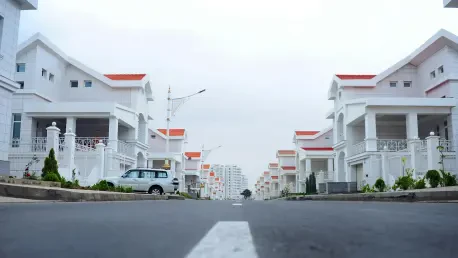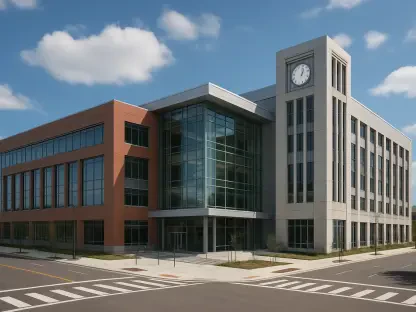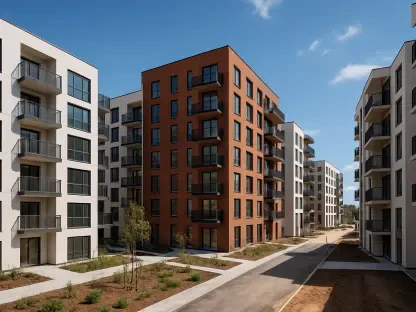Luca Calarailli’s extensive experience in construction, design, and architecture, along with his passion for technological innovation, makes him an insightful expert in the world of real estate transformation. Today, he shares his insights into the exciting plans for repurposing the former Ward House Nursing Home on the Isle of Wight into a 21-bed house in multiple occupation (HMO), addressing both community needs and architectural challenges.
Can you elaborate on the plans submitted for converting the former Ward House Nursing Home?
The conversion plans for the former Ward House involve transforming the existing structure into a 21-bedroom house in multiple occupation. This involves optimizing the use of the space, focusing on converting a previously underutilized building. It represents a strategic approach to utilize brownfield land, aligning with broader goals of sustainability and efficiency in urban planning.
What changes will be made to transform it into a 21-bed house in multiple occupation (HMO)?
Transforming Ward House into an HMO involves considerable internal restructuring. The ground floor will host communal areas and en suite bedrooms, creating a shared-living experience, while the other floors will largely focus on maximizing the number of bedrooms to meet housing needs without altering the building’s exterior significantly.
Why was Ward House Nursing Home closed in February last year?
Ward House closed its doors because it was no longer feasible to continue operations, leading to a need for residents to relocate. The building’s vacancy presented an opportunity to repurpose it for urgently needed affordable housing, a pressing issue in many communities today.
How will the building be structured after the conversion?
Post-conversion, the building will feature different floors catering to various needs. The basement will have a laundry and storage rooms, important for residents’ daily functioning. On the ground floor, residents will enjoy communal areas alongside seven en suite bedrooms and a shared kitchen. The first and second floors are each structured with seven bedrooms, communal bathrooms, and kitchen facilities. These elements are thoughtfully designed to create a balance between private and communal living spaces.
How many bedrooms will have en suite facilities, and on which floors will they be located?
There will be a total of seven en suite bedrooms, all situated on the ground floor. These facilities provide added comfort and privacy, making ground-floor living particularly appealing to a segment of future residents.
What is the identified need for low-cost rented accommodation on the Isle of Wight?
The Isle of Wight, like many areas, faces a critical shortage of affordable housing. This proposal directly addresses this by creating accessible rental options, promoting secure occupancy and maintaining the structural integrity and vitality of the locale.
How does this proposal intend to fill that need?
By converting underutilized space into affordable accommodation, the project aims to provide necessary housing solutions, ideally leading to full occupancy rates. It anticipates supporting not just individuals in need but also invigorating the local community by maintaining the building’s relevance and functionality.
How is this project expected to affect occupancy rates?
Occupancy rates are expected to be strong, primarily due to the affordable nature of the proposed housing. By offering reasonably priced rentals, the project taps into a niche market, which should ensure near-full capacity and reduce housing pressure on the Island.
How will this conversion contribute to the council’s housing strategies?
This conversion plays a crucial role in the council’s wider housing strategy by bolstering initiatives to combat homelessness and providing viable, low-cost living spaces. It aligns with efforts to mitigate housing shortages while maintaining and repurposing existing structures.
Will the exterior of the building undergo any significant changes?
No fundamental changes are planned for the building’s exterior. The focus remains on the interior transformation to preserve the architecture while maximizing space and utility, adhering to both conservation and modern utilization principles.
What provisions are being made for waste and cycle storage within the site?
Provisions for waste and cycle storage are planned within the site. These will be managed carefully through planning conditions, emphasizing the development’s commitment to practical and sustainable living solutions.
How can the public view the submitted plans, and what is the process for public consultation?
The public can access the submitted plans through the council’s planning register. A public consultation runs until mid-July, allowing for community engagement and feedback, crucial for informed decision-making in urban development.
What are the next steps in the decision-making process, and when is a decision expected?
Following the consultation period, the council will review feedback and details before making a decision, which is expected by early August 2025. This timeline ensures there is ample opportunity for thorough consideration and community input.
Do you have any advice for our readers?
Stay informed and engaged with local development plans, as they offer insights into community evolution and opportunities for involvement. Engaging in public consultations can shape the future of local spaces, so I encourage your readers to participate actively.









